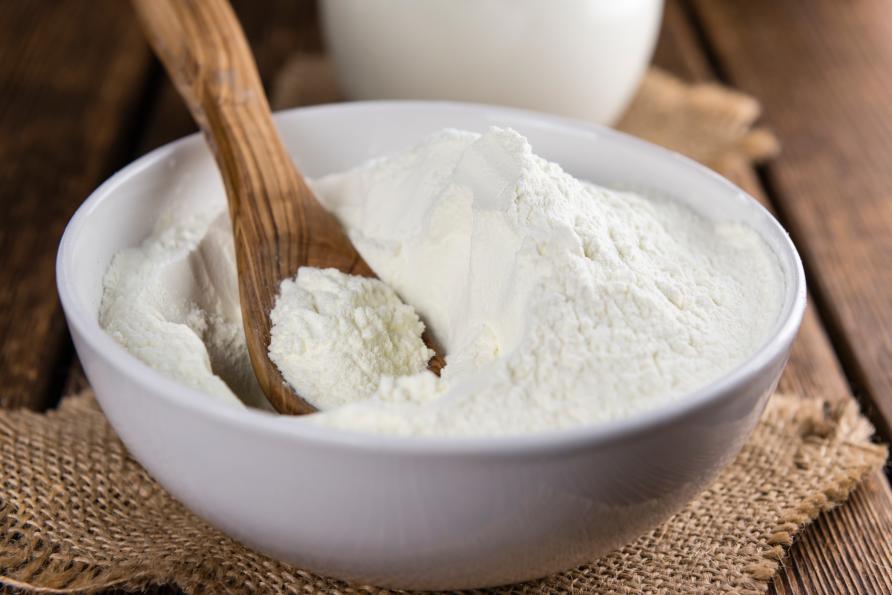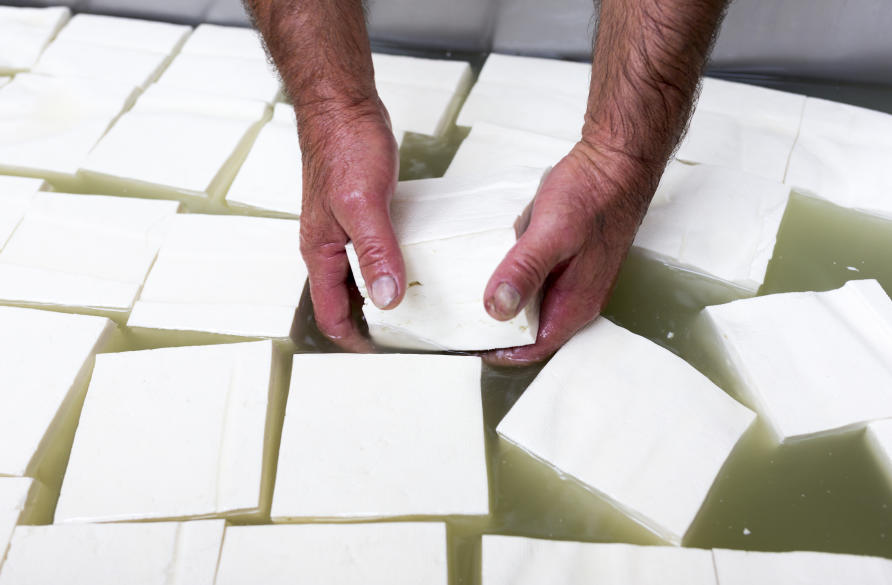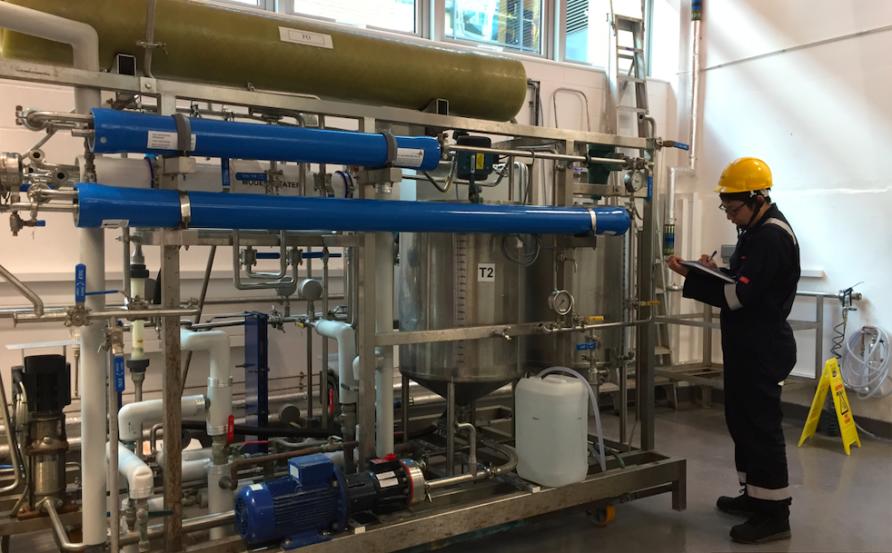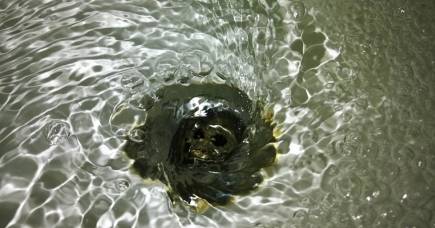Making milk powder less energy intensive

Dr George Chen , Dr Judy Lee, Professor Sally Gras and Professor Sandra Kentish
In addition to the refrigerated dairy foods that many of us enjoy – milk, yoghurt and cheese for example – Australia also manufactures more than 220,000 tonnes of milk powder each year.
Dairy powders are often used in commercial baking and the manufacture of chocolate, ice cream and infant milk, as a versatile product that doesn’t need refrigeration and has a long shelf life.

However, to produce products like milk powder, whey protein powder, and lactose (milk sugar) powder, a lot of energy is consumed in water evaporation and drying.
But the Separation Technologies Team in the ARC Dairy Innovation Hub at the University of Melbourne, in collaboration with the University of Surrey in the United Kingdom, has now demonstrated that a by-product from cheese making can be used to more efficiently concentrate the milk, thereby reducing the energy used in the process by up to 20 per cent.
Tricking our tongues: Creating guilt-free cheese
The cheese making by-product is known as salty whey, which is the salt and liquid expelled from making semi-hard or hard cheeses like Cheddar or Colby.
Salt is added to the protein-rich cheese curd when making these cheeses, however, less than a half of this added salt is retained in the curd. The rest is wasted as salty whey, which is expelled from the curd together with the excessive moisture during curd pressing.
But our pilot scale study shows that milk can be concentrated by ‘pulling’ water from the milk through a semi-permeable membrane and into the salty whey, thereby drying it out faster than current technologies. The salty whey is known technically as the draw solution, as it is used to ‘draw’ water across the membrane from the milk.
This process is called forward osmosis (FO), an emerging membrane technology which was originally developed for water treatment.
The process takes advantage of the osmotic pressure generated when water moves across a barrier, such as a membrane. Water will always move into an area with a high concentration of a solute, like salt, from an area with a low concentration solution.

Osmotic pressure is effectively the pressure that would be required to stop water from diffusing through this barrier by osmosis.
Since salty whey is readily available in cheese making plants it can be used as the draw solution to drive the process of concentrating milk products, before disposal. This avoids or limits the need for the re-concentration of the diluted draw solution in typical forward osmosis systems.
We can have urbanisation and enough to eat
As water naturally flows from low concentration to high concentration solutions, the pumping energy used to deliver the high hydraulic pressure in conventional reverse osmosis processes is no longer required.
In addition to the energy saving in pumping, forward osmosis pre-concentrates milk before it is further evaporated, reducing the energy consumption in these downstream evaporation and drying processes.
Forward osmosis, which operates at below 50°C, can potentially be used as an alternative to traditional thermal treatment systems to remove water from other liquid foods such as fruit juices, avoiding the degradation of heat-sensitive compounds and the loss of their bioactive properties.
The pilot plant was located at the University of Surrey in the United Kingdom and used a draw solution that mimicked salty whey, to concentrate skim milk by a factor of two and a half. The total installed membrane area was 24 square metres, which is about 20 times smaller than might be needed for a full scale process.
The work demonstrated that less than 10 kWh of electric energy is required in this forward osmosis process to remove one tonne of water from skim milk, which is only half of what is typically required for traditional membrane concentration.

For the Australian dairy industry, implementation of this technology could potentially lead to savings of millions of dollars from the reduced steam requirements in thermal evaporators.
This emerging technology offers an energy efficient alternative to concentrate milk, if unlimited access to a brine stream can be made available within or in the proximity of dairy processing plants. This would be of particular benefit to the state of Victoria that produced more than 60 per cent of the total 8.8 billion litres of milk in Australia in 2019.
Taking the sludge out of wastewater
Another important process in the dairy industry is the removal of salts, often referred to as demineralisation, which significantly increases the value of dairy products.
For example, when making infant formula and baby foods, a high degree of demineralisation, greater than 70 per cent, is required due to the limited kidney functions in babies and toddlers.
Demineralisation is typically achieved by passing dairy products through a bed of ion exchange resins, which bind strongly with salt ions to produce a demineralised stream. The regeneration of these resins, however, requires the use of additional chemicals that end up in waste streams and lead to high treatment costs.
To eliminate the need for resin regeneration, the Separation Technologies Team have been developing electrically driven processes, like electrodialysis and membrane capacitive deionisation, to separate charged salt ions from milk.

Different to pressure-driven filtration processes that are widely employed in industry, the suite of innovative membrane technologies developed within the ARC Dairy Innovation Hub can provide solutions to processors in not only the dairy industry, but also the broader food and beverage industries.
Together these technologies help address technical and environmental challenges that limit productivity and constrain the growth of business.
This work has been financially supported through a Victoria Fellowship awarded by the Victorian Government and by The ARC Dairy Innovation Hub supported under The Australian Research Council’s Industrial Transformation Research Program (ITRP) funding scheme (IH20100005). The ARC Dairy Innovation Hub is a collaboration between The University of Melbourne, The University of Queensland and Dairy Innovation Australia Ltd.
Banner: Getty Images
“This article was first published on Pursuit. Read the original article.”




